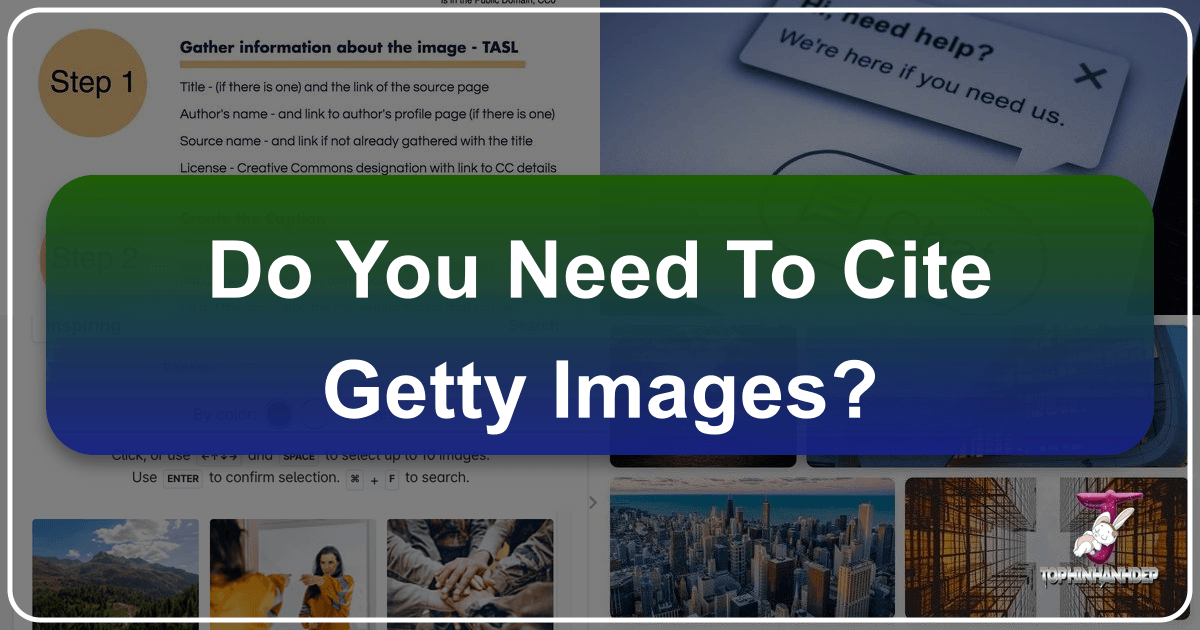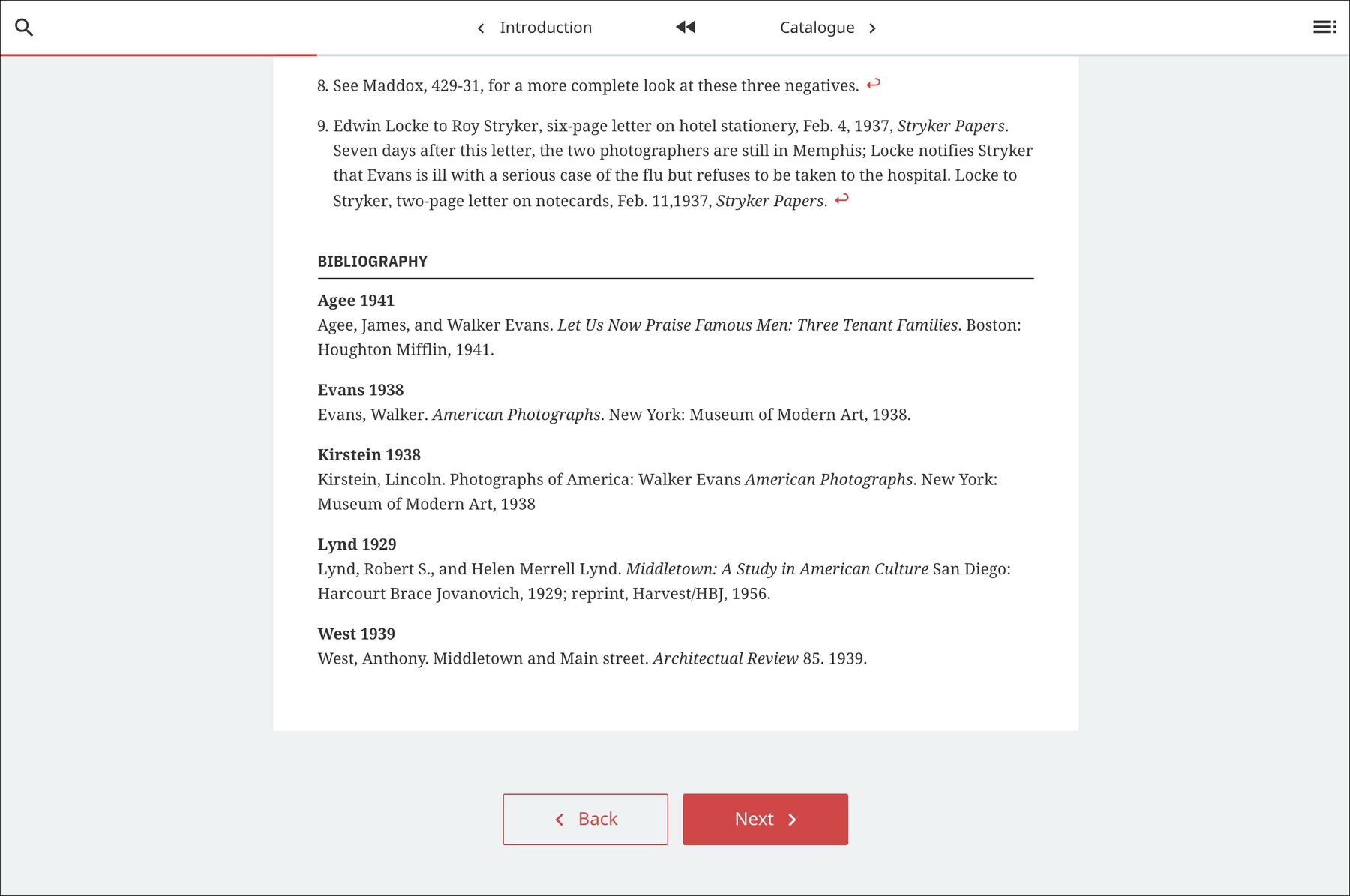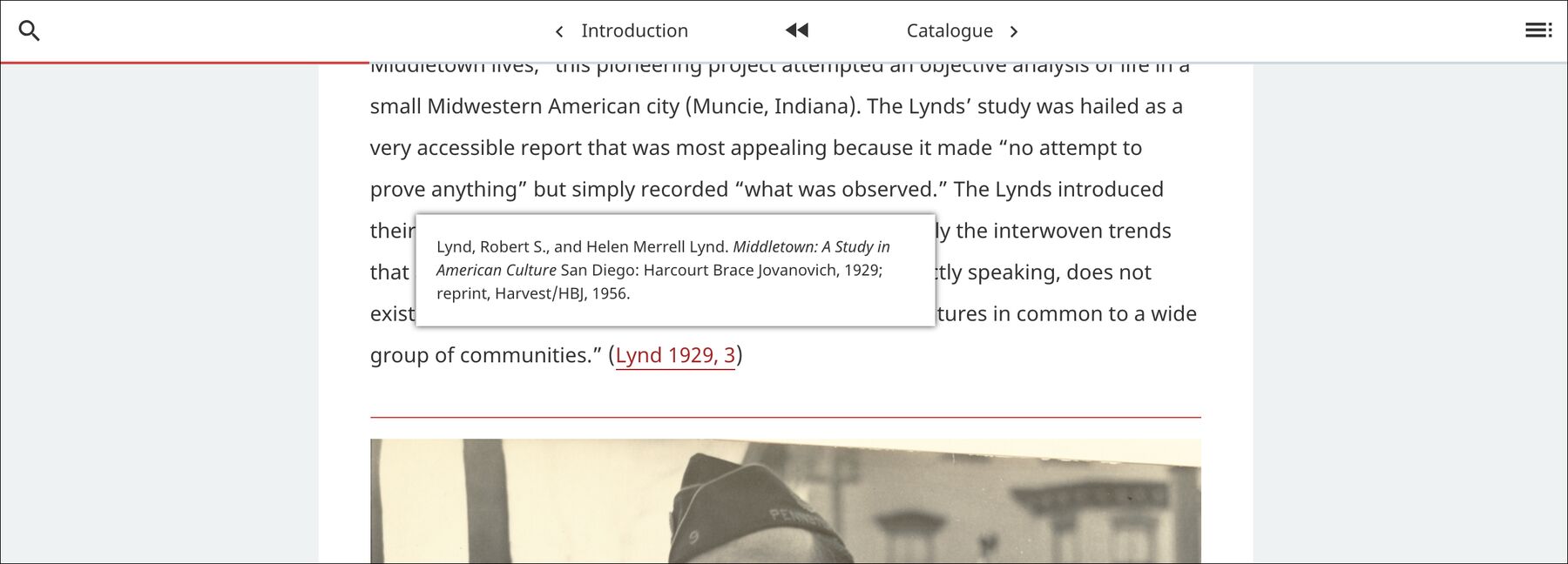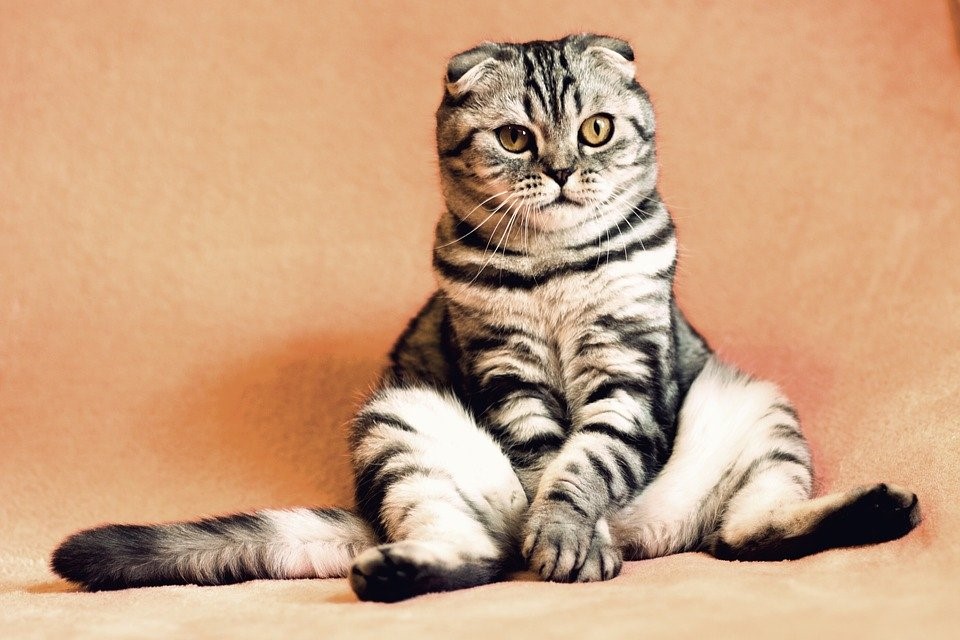Do You Need to Cite Getty Images? Understanding Copyright, Licensing, and Best Practices

In today’s visually-driven world, images are the currency of communication, enriching everything from academic papers and professional presentations to marketing campaigns and personal blogs. Platforms like Getty Images offer an immense trove of high-quality visuals, ranging from stunning nature photography to crucial historical moments. However, with this incredible accessibility comes a critical responsibility: understanding the legal and ethical implications of using copyrighted material. The question, “Do you need to cite Getty Images?” isn’t just about academic formality; it’s fundamental to respecting intellectual property and avoiding severe legal repercussions.

The short answer is an emphatic “yes,” you almost always need to acknowledge or properly license images from Getty Images. Getty operates as a premium stock photography agency, representing countless photographers and artists. They are not merely a repository; they are a sophisticated licensing body that protects the rights of their contributors and monetizes their work. Whether you’re using an image for a scholarly project, a digital artwork, or a commercial endeavor, proper engagement with Getty’s terms is paramount. Ignoring these requirements can lead to significant legal and financial penalties, tarnishing reputations and draining resources.
This comprehensive guide will delve into the intricacies of using Getty Images, explaining why citation and licensing are indispensable. We’ll explore the various methods of attribution, the serious consequences of copyright infringement, and how our platform, Tophinhanhdep.com, provides a robust ecosystem for discovering, managing, and creating with images, while always advocating for ethical and compliant visual content practices.

Navigating the Complexities of Image Licensing and Copyright
The world of digital imagery is governed by copyright law, designed to protect the original creators of visual content. Getty Images stands as a prominent gatekeeper in this landscape, managing an extensive collection of photographs, illustrations, and video clips on behalf of their artists. Their business model is built on licensing these assets for specific uses, ensuring artists are compensated for their work.
Getty Images’ Business Model and Copyright Protection
Getty Images offers various licensing options, primarily Rights-Managed (RM) and Royalty-Free (RF). Rights-Managed licenses are highly specific, detailing exactly how, where, and for how long an image can be used. Royalty-Free licenses, while paid upfront, allow for broader, perpetual use across multiple projects, but still come with usage restrictions (e.g., limits on print runs, no resale of the image as a standalone product). Crucially, even “Royalty-Free” does not mean “free to use without payment or attribution.” It means royalty payments are not collected per use after the initial licensing fee.

The essence of Getty Images’ operation lies in copyright. When a photographer or artist submits work to Getty, they grant Getty the right to license that work. Getty then employs sophisticated technology, including image recognition software, to track the usage of their images across the internet. This vigilant monitoring ensures that unauthorized uses are identified, and appropriate action can be taken.
Understanding this framework is the first step toward responsible image usage. Unlike platforms that offer public domain or Creative Commons licensed content (which often still require attribution, albeit under different terms), Getty Images is fundamentally a commercial entity. Their images are assets, and their use without proper licensing is akin to theft.
The Grave Consequences of Unauthorized Image Use
Failing to properly license or cite a Getty Image can lead to serious repercussions that extend far beyond a mere slap on the wrist. The consequences can be broadly categorized into legal, financial, and reputational damages.
- Copyright Infringement Lawsuits: Getty Images is well-known for aggressively pursuing copyright infringement. If they detect unauthorized use of an image, you can expect to receive a demand letter. This letter will typically demand payment for the unauthorized use, often at a rate significantly higher than the original licensing fee, sometimes including retrospective licensing fees, penalties, and legal costs. These cases can escalate into full-blown lawsuits, which are costly, time-consuming, and highly stressful.
- Significant Fines and Damages: Copyright infringement penalties can be substantial. Statutory damages in the United States can range from $750 to $30,000 per infringement, and up to $150,000 if the infringement is deemed willful. Beyond these statutory damages, the copyright holder can also seek actual damages (the market value of the license) and lost profits.
- Reputational Damage: For individuals and businesses alike, being accused of copyright infringement can severely damage credibility and public image. Trust is hard-won and easily lost, especially in the digital age where information spreads rapidly. A legal dispute over image use can undermine professional standing, scare off clients, and create a perception of unethical conduct.
- Content Removal and Platform Penalties: Many online platforms (blogs, social media, e-commerce sites) have strict policies regarding copyright. If an image you use is identified as infringing, the platform may remove your content, suspend your account, or even ban you. This can disrupt your operations and negatively impact your online presence.
Even if an image is initially found through a general search engine like Google Images, the responsibility always lies with the user to verify its licensing terms. As Tophinhanhdep.com emphasizes, content creators should always prioritize legitimate sourcing, whether it’s through direct licensing, public domain research, or Creative Commons verification. We also provide a vast array of high-resolution images, backgrounds, and aesthetic photos that come with clear usage guidelines, enabling our community to create compelling visual content without legal worries.
When and How to Properly Cite Getty Images
While licensing covers the legal right to use an image, “citation” or “attribution” refers to giving credit to the original creator and source. In many contexts, especially academic, editorial, or when specifically required by a license, both licensing and proper citation are necessary. It’s a professional courtesy and a foundational principle of ethical content creation.
The Distinction Between Licensing and Attribution
It’s crucial to understand that buying a license to use a Getty Image does not automatically negate the need for attribution. In fact, many Getty licenses explicitly require a credit line.
- Licensing: This is the legal act of acquiring the right to use an image for a specified purpose (e.g., commercial advertising, website content, editorial publication). It involves payment to Getty Images (and by extension, the artist) for these usage rights.
- Attribution/Citation: This is the act of providing a credit line that acknowledges the photographer/artist and the source (Getty Images). It’s typically formatted as “Photographer’s Name/Getty Images” or similar, often placed directly underneath the image or in an image credit section.
For images used in academic papers, scholarly articles, or educational materials, even if licensed, formal citation (e.g., MLA, APA, Chicago style) is usually required in addition to any credit lines mandated by the license. This demonstrates academic integrity and allows readers to trace the source.
Standard Elements for Citing Digital Images
When citing a digital image, whether from Getty Images or another professional source, several key pieces of information are generally required. The specific format may vary depending on the citation style (MLA, APA, Chicago, etc.), but the core components remain consistent.
Here’s a breakdown of common elements, drawing inspiration from established citation guides:
- Image Creator/Photographer: The name of the individual or entity who created the image.
- Image Title: The specific title given to the image, if available.
- Year Created: The year the image was produced.
- Source/Platform Name: The name of the database, website, or institution where the image was accessed (e.g., Getty Images, The Metropolitan Museum of Art, Tophinhanhdep.com).
- Numbers (if applicable): Any identifying numbers or codes for the image within its source.
- URL: The direct link to the image on the platform.
- Date Accessed: The date you viewed or downloaded the image (especially important for online content that might change).
MLA Citation Structure for Digital Images
For those working in academic or research fields, MLA (Modern Language Association) style is commonly used for humanities. Here’s a generalized structure for citing a digital image found on a website, adapting principles for Getty Images:
Works Cited Entry Structure: Image Creator’s Last Name, First Name. “Image Title.” Website Name, Day Month Year Published, URL.
- Example: Smith, John. “Golden Gate Bridge at Sunset.” Getty Images, 15 May 2018, www.gettyimages.com/detail/photo/golden-gate-bridge-at-sunset-royalty-free-image/123456789.
In-Text Citation Structure: (Image Creator’s Last Name)
- Example: (Smith)
If an image is found within an article on a website, you would also incorporate the article details: Image Creator’s Last Name, First Name. “Image Title.” Article Title, by Article Author’s First Name Last Name, Website Name, Day Month Year Published, URL.
- Example: Doe, Jane. “Lighthouse on a Stormy Coast.” Coastal Wonders, by Mark Johnson, Photography Monthly, 10 Oct. 2021, www.photographymonthly.com/coastal-wonders/lighthouse-storm.html.
Citing Images from Databases and Institutional Collections
For images that are part of larger, curated databases or institutional collections (such as those from museum websites or scholarly archives, which Getty Images also provides for), the citation might look slightly different:
Works Cited Entry Structure: Creator’s Last Name, First Name. Photograph Title. Year Created. Database Name, Numbers (if applicable), URL.
- Example: Freed, Leonard. Holidaymaker Stuck in Traffic Jam. 1965. ARTstor, www.artstor.org.
The Getty Research Institute, for instance, uses a system like Quire for its scholarly publications, which allows for robust bibliographic data capture (in YAML files) and in-text citations that generate pop-ups with full references and automatic bibliographies. This highlights that even for internal and academic Getty content, meticulous sourcing and citation are embedded in their publishing workflows.
Practical Tips for Attribution
- Placement: For web use, a clear credit line directly under the image is ideal. For print, include it in a caption or a dedicated “Image Credits” section.
- Consistency: Use a consistent citation style throughout your project.
- Specificity: Link directly to the image’s page on Getty Images if possible, rather than just the Getty homepage.
- Check the License: Always refer to the specific license agreement you obtained from Getty Images. It will clearly outline the required attribution format and placement. Some licenses may have specific language requirements (e.g., “© [Year] [Photographer Name]/Getty Images”).
At Tophinhanhdep.com, we understand the importance of clear usage terms. While our platform offers a wide array of beautiful photography—including wallpapers, backgrounds, aesthetic images, nature shots, abstract art, and emotional pieces—many of these are available under more permissive licenses for personal use. However, for commercial applications, or if you’re ever in doubt, we always advise checking the specific terms associated with each image. Our goal is to empower creativity responsibly, whether you’re looking for high-resolution stock photos or digital photography to enhance your visual design projects.
Enhancing Visual Projects Responsibly with Tophinhanhdep.com
In a world saturated with visual content, the ability to find, utilize, and even create compelling images responsibly is a critical skill. Tophinhanhdep.com is designed to be your go-to resource, offering a rich collection of imagery and a suite of tools that support ethical and creative visual design. We understand the nuances of image rights, which is why we not only provide diverse content but also champion best practices for image sourcing and management.
Tophinhanhdep.com: A Hub for Diverse Imagery
Our platform serves as a vibrant collection point for all your image needs, fostering creativity while encouraging responsible usage. We curate an extensive range of categories to suit every project and mood:
- Images: Dive into a world of visual splendor with our carefully selected Wallpapers, perfect for personalizing devices, and Backgrounds that set the tone for any digital creation. Explore Aesthetic collections for contemporary and stylish visuals, breathtaking Nature scenes that capture the essence of the outdoors, and thought-provoking Abstract art. For moments requiring depth, our Sad/Emotional category offers poignant imagery, while our Beautiful Photography showcases the pinnacle of visual artistry.
- Photography: We pride ourselves on offering High Resolution images suitable for professional printing and digital displays. Our Stock Photos are ideal for various commercial and editorial applications, providing a reliable source for high-quality visuals. Delve into the art of Digital Photography with resources on various Editing Styles, helping you achieve the perfect look for your projects.
While Getty Images specializes in premium, licensed content, Tophinhanhdep.com complements this by offering a blend of readily available and easily accessible visuals, often with simpler usage terms for personal and non-commercial projects. We ensure that our users can always find clear guidelines, fostering an environment where creativity thrives within ethical boundaries.
Empowering Creativity with Advanced Image Tools
Beyond just providing images, Tophinhanhdep.com equips you with a suite of cutting-edge Image Tools designed to optimize and transform your visual content. These tools are invaluable whether you’re working with images sourced from Tophinhanhdep.com, responsibly licensed content from Getty Images, or other legitimate sources.
- Converters: Seamlessly transform image formats to meet specific project requirements.
- Compressors: Optimize image file sizes without compromising quality, crucial for web performance and storage.
- Optimizers: Fine-tune your images for various platforms, ensuring they look their best everywhere.
- AI Upscalers: Enhance the resolution and detail of your images, breathing new life into lower-quality visuals. This is especially useful for older photos or when you need to adapt an image for a larger display without pixelation.
- Image-to-Text: Extract text from images, streamlining data entry and content creation workflows.
These tools exemplify Tophinhanhdep.com’s commitment to providing a holistic experience. They empower users to adapt and refine any image, ensuring it fits perfectly into their visual design aspirations, always with an emphasis on efficient and high-quality output.
Fostering Visual Design and Inspiration
Tophinhanhdep.com is more than a resource; it’s a catalyst for visual creativity. We believe that robust tools and diverse imagery should fuel innovative Visual Design and inspire new concepts.
- Graphic Design & Digital Art: Our platform supports graphic designers and digital artists by offering a wealth of resources and imagery that can be incorporated into complex projects, digital paintings, and marketing materials.
- Photo Manipulation & Creative Ideas: Explore the possibilities of Photo Manipulation with our versatile image library. We also provide Creative Ideas and tutorials to spark your imagination, guiding you through various techniques and applications.
- Image Inspiration & Collections: Discover endless inspiration with our curated Photo Ideas, Mood Boards, and Thematic Collections. Stay ahead of the curve with insights into Trending Styles, ensuring your projects remain fresh and relevant.
Whether you’re crafting a new website, developing a branding campaign, or simply looking for the perfect visual to express an emotion, Tophinhanhdep.com offers the inspiration and assets needed. We constantly update our collections to reflect contemporary tastes and evolving artistic trends, ensuring you always have access to the latest and most impactful imagery. This dedication to fostering a creative community is built on the understanding that powerful visual content starts with respecting its origins, a principle we uphold through clear guidelines and educational resources.
Conclusion: Ethical Imagery as a Foundation for Creativity
The question of whether to cite Getty Images ultimately boils down to a fundamental principle: respect for intellectual property. As a leading provider of premium stock photography, Getty Images operates on a licensing model that ensures artists are compensated for their creative work. Using their images without proper authorization, whether through a license purchase or adherence to specific attribution requirements, constitutes copyright infringement and can lead to serious legal penalties, financial demands, and irreparable damage to one’s reputation.
For anyone engaging with visual content professionally or academically, understanding the intricacies of image licensing and citation is non-negotiable. While the act of “citing” in an academic sense primarily applies to editorial and educational contexts, the requirement to provide a “credit line” or “attribution” is often a mandatory component of a paid license from Getty Images. Always consult the specific terms of your license and, when in doubt, default to providing comprehensive attribution including the artist’s name and “Getty Images” as the source.
In this dynamic digital landscape, platforms like Tophinhanhdep.com play a crucial role in providing accessible, high-quality images and powerful tools for creative expression. We curate vast collections of wallpapers, backgrounds, aesthetic and nature photography, and abstract art, alongside advanced image tools like AI upscalers and compressors. Our mission is to empower users to realize their visual design aspirations, from graphic design to photo manipulation, all while fostering a community that values ethical content creation.
Whether you’re sourcing images from Getty Images, Tophinhanhdep.com, or any other platform, the responsibility for compliant and respectful usage rests with you. Be diligent in checking licensing agreements, be generous with attribution, and leverage resources that support informed decision-making. By doing so, you not only protect yourself from potential legal pitfalls but also contribute to a culture that champions creativity and respects the hard work of visual artists worldwide. Let responsible practices be the cornerstone of your visual projects, allowing your creative endeavors to flourish on a solid ethical foundation.